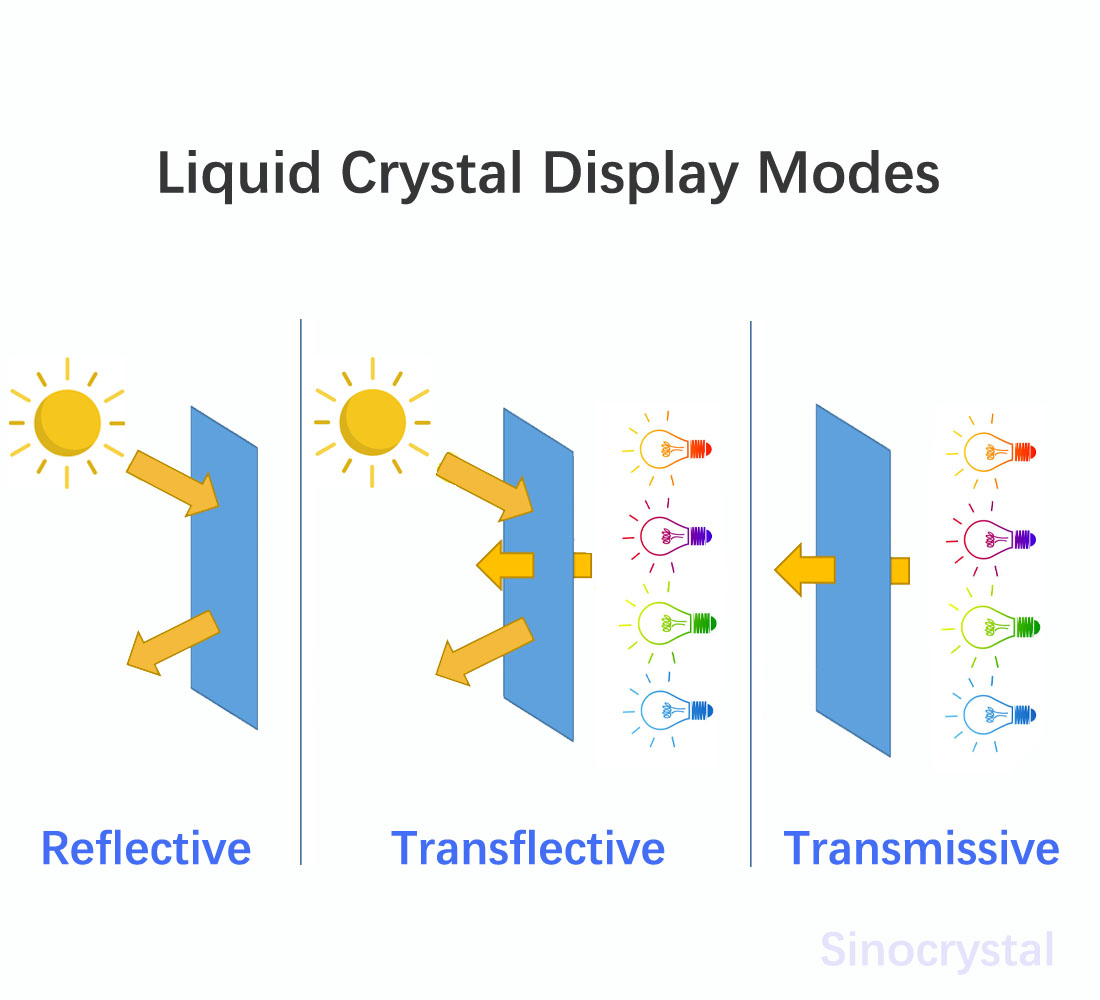
The most common being TN, STN and FSTN. The LCD fluid twists the orientation of light passing through the glass causing the active pixels to darken. Each fluid offers unique characteristics to your LCD. These characteristics results in changes to the LCDs color, viewing angle, clarity and/or temperature range. The use of which fluid type you choose (TN, HTN, STN or FSTN) will affect the unit cost. TN fluid is less expensive than STN fluid. STN fluid is less expensive than FSTN fluid type. Below is a brief description on a few of the different LCD fluid types with images added to help add clarity.
TN lcd screen, is Twisted Nematic. In a quiescent state, display has a 90° twist in the alignment of the liquid crystal molecules at the transition between the surfaces of the two glass substrates.Polarizers attached to the outer surface of the substrates are oriented to allow light to pass through the display. When activated selectively by an electric field, the activated segments align to the field and no longer twist light passing through the display creating a contrast between on and off states.
HTN lcd screen, (High Twisted Nematic, highly twisted nematic) nematic liquid crystal molecules, HTN Screen has a higher twist (between that of TN & STN) giving it increased performance over TN LCD. The viewing angle is superior to TN and has improved contrast when multiplexing from 1/8 to 1/32 MUX. HTN has a slight yellow tint that looks good with high contrast segments. HTN has a lower cost than STN.
STN (Super Twisted Nematic) The structure of STN is similar to TN & HTN but with 180 to 270twist. The higher twist gives better contrast and viewing angle for highly multiplexed applications. A STN display normally has a yellow-green or grey background that is due to the optical effect called birefringence that changes the polarization to elliptical rather than linear polarization.
FSTN (Film+STN) lcd screen, in order to improve the background color problem of ordinary STN, a compensation film is added to the polarizer to eliminate dispersion and realize black-and-white display.
LCD Type |
Color Mode | Dot Color | Background Color | Structure |
TN |
Gray | Black | Gray |
|
HTN |
Gray | Black | Gray or Yellow |
|
STN |
Yellow-Green |
Dark Blue | Yellow-Green |
|
Light Gray |
Dark Blue | Light Gray |
||
| Blue | White | Blue |
||
FSTN |
Black & White (B/W) |
Black | White |
|
The 8 inch displays might be affected and delay for an accident.
New iPhone 13 Series will use On-Cell OLED Displays. And it that will be launched in the second half of this year will be exclusively supplied by Samsung Display (SDC)
This is the project management of how sinocrystal handle your customized project relate to displays.
Discover the key factors to consider when choosing an LCD display for your project, including size, resolution, interface, brightness, and customization options from a factory-direct manufacturer.
Discover the latest innovations in rugged LCD displays for harsh environments — from extreme temperature resistance to sunlight readability and waterproof designs. Factory-direct manufacturing with full customization.
A complete guide to LCD display connection methods, including SPI, I2C, RGB, MIPI, LVDS interfaces and physical mounting options. Learn how to connect monochrome and TFT LCDs to your development board or product housing.
This week, we had the pleasure of hosting an esteemed international client at our LCD display manufacturing facility in Dongguan. Guided by our team, the client visited key production areas such as the fully automated COG bonding line, backlight assembly area, full lamination workshop, and final product aging test section. They highly appreciated our production capacity, strict quality control, and engineering expertise. This visit strengthened mutual trust and set the stage for future collabora